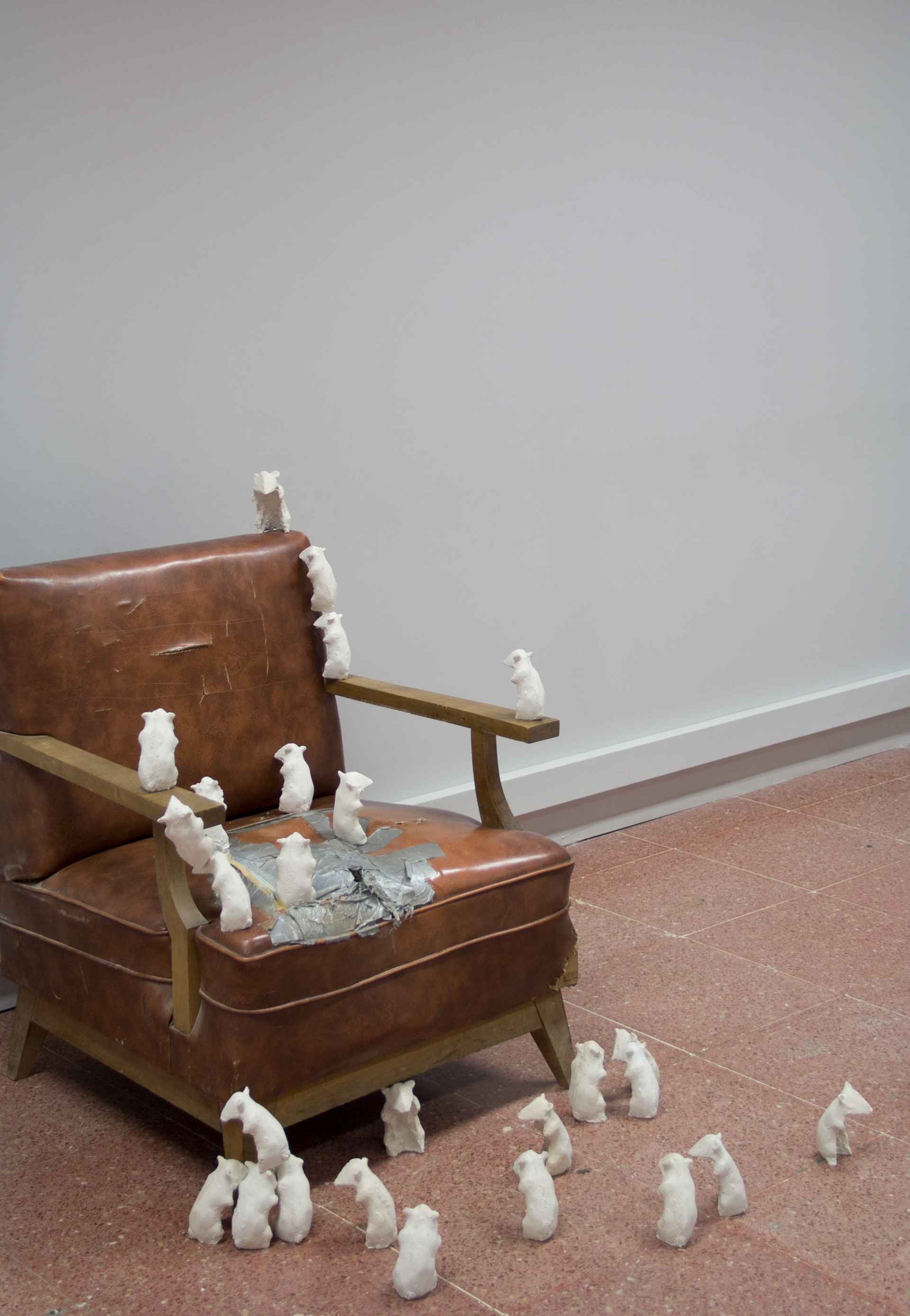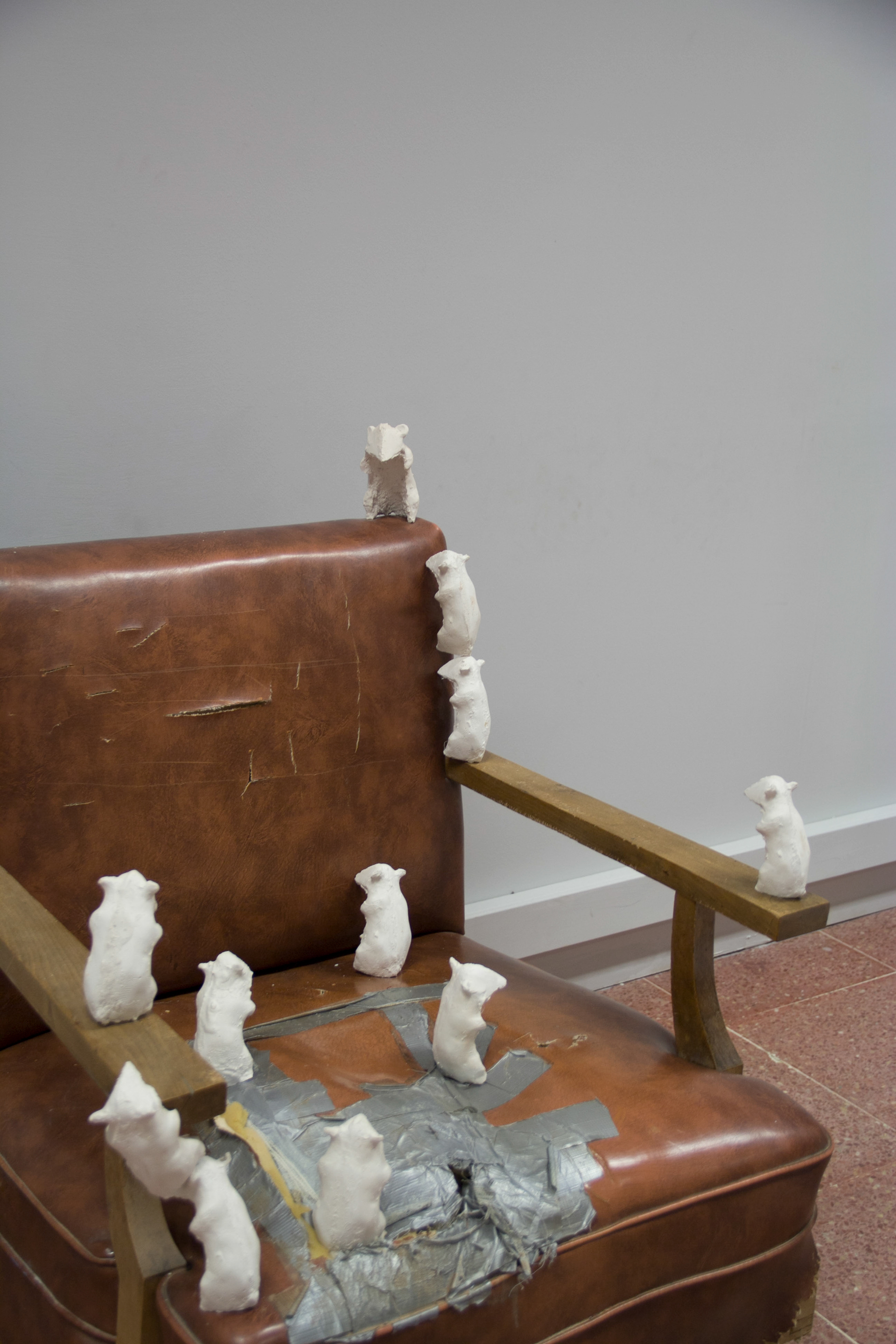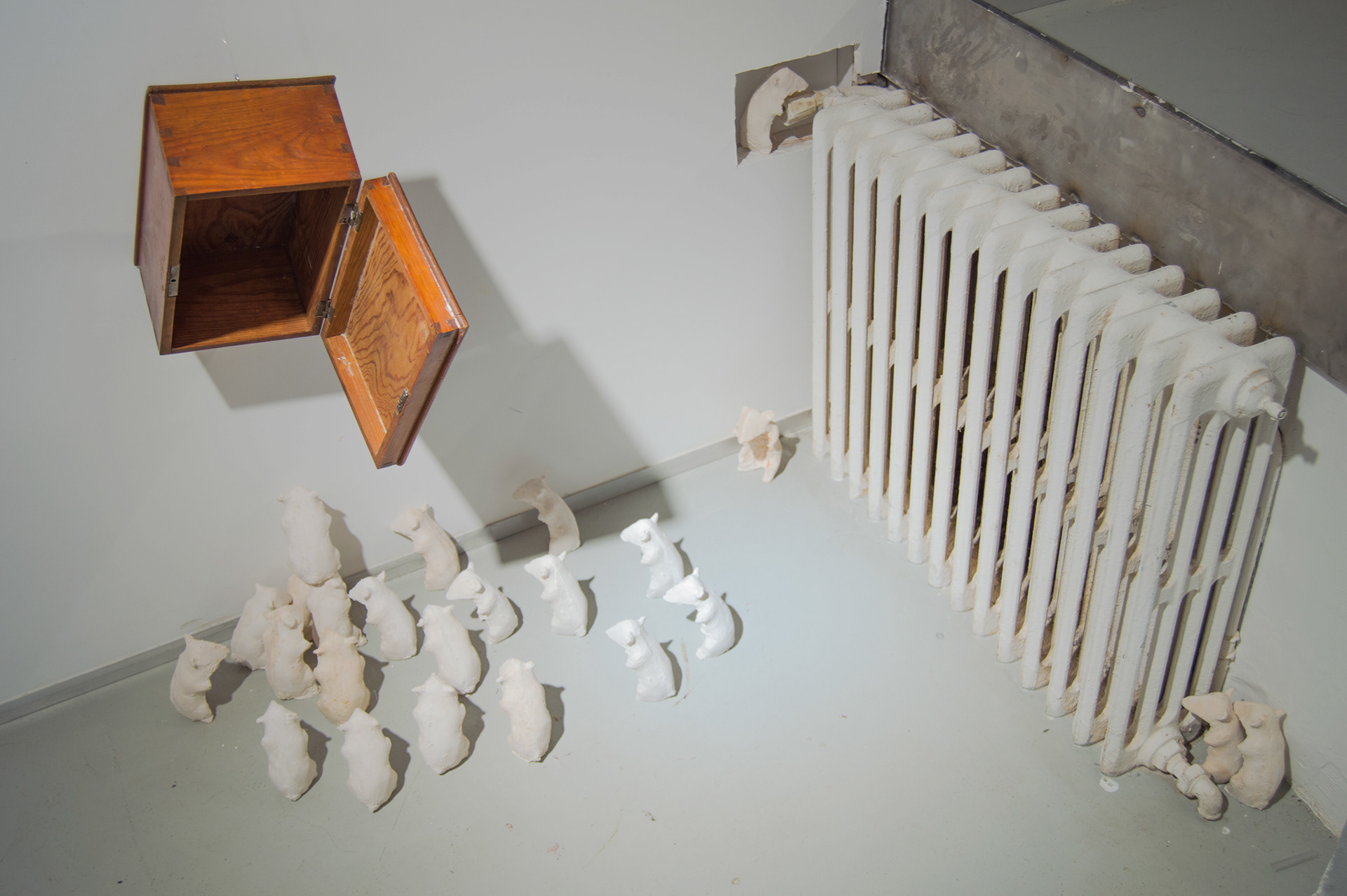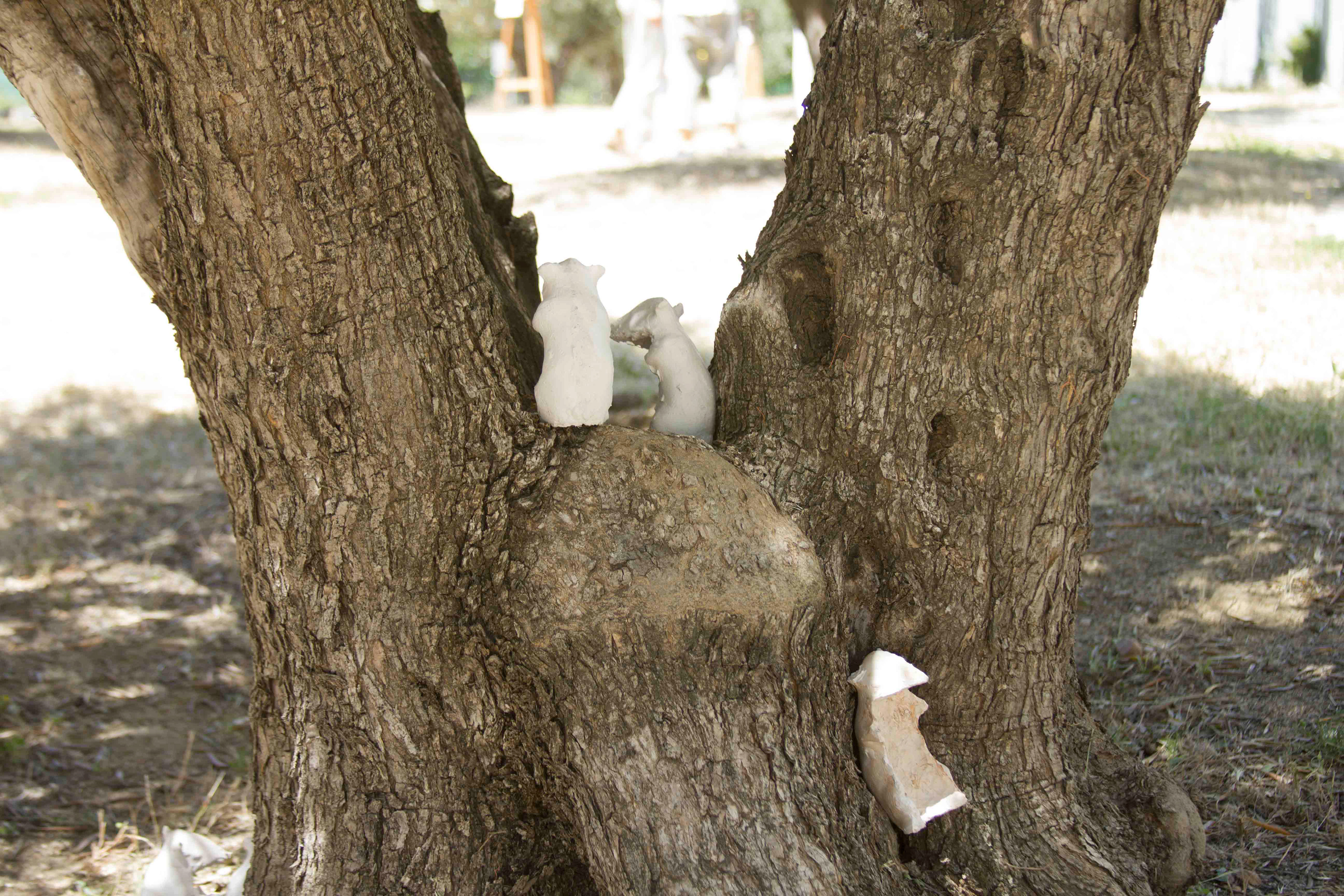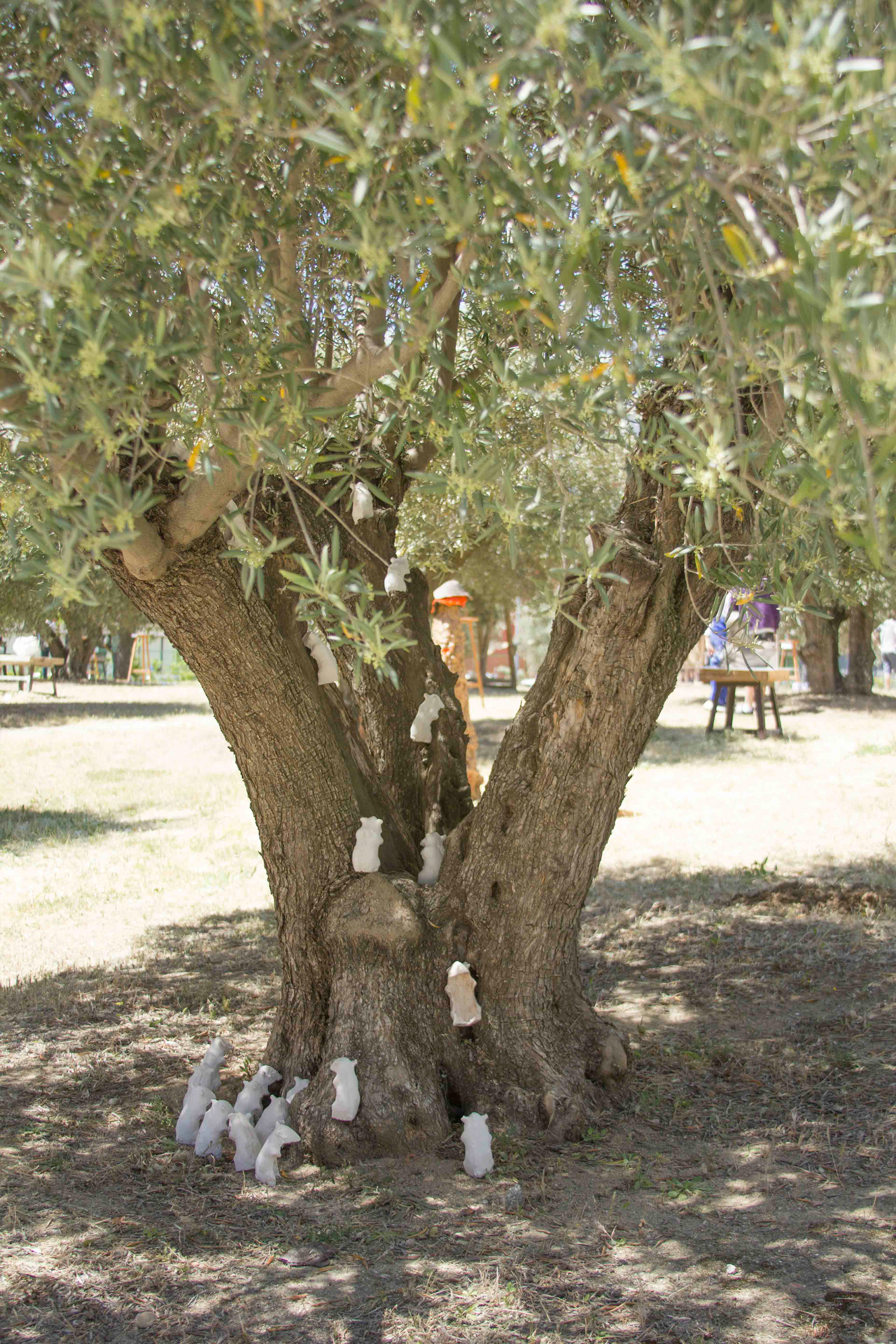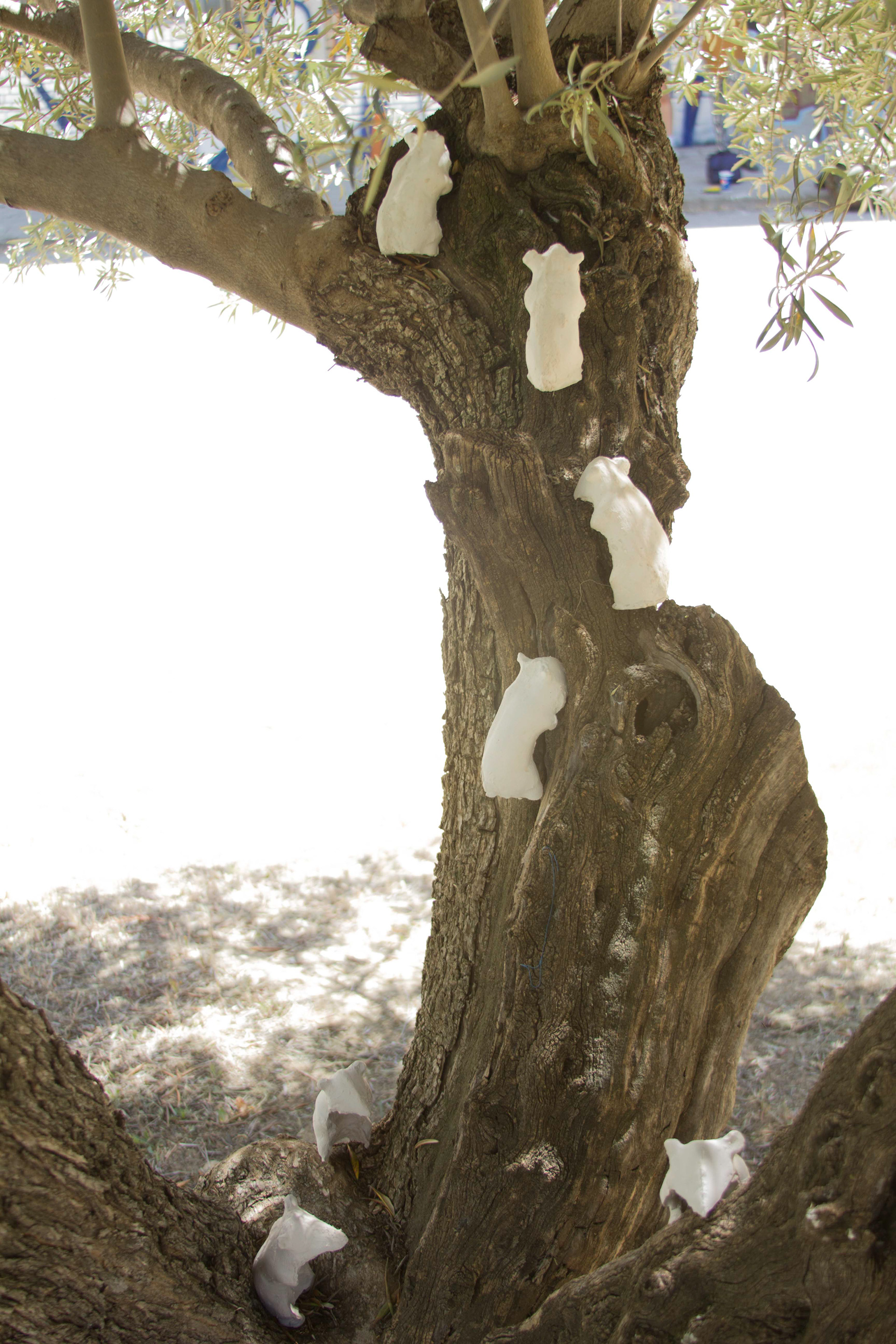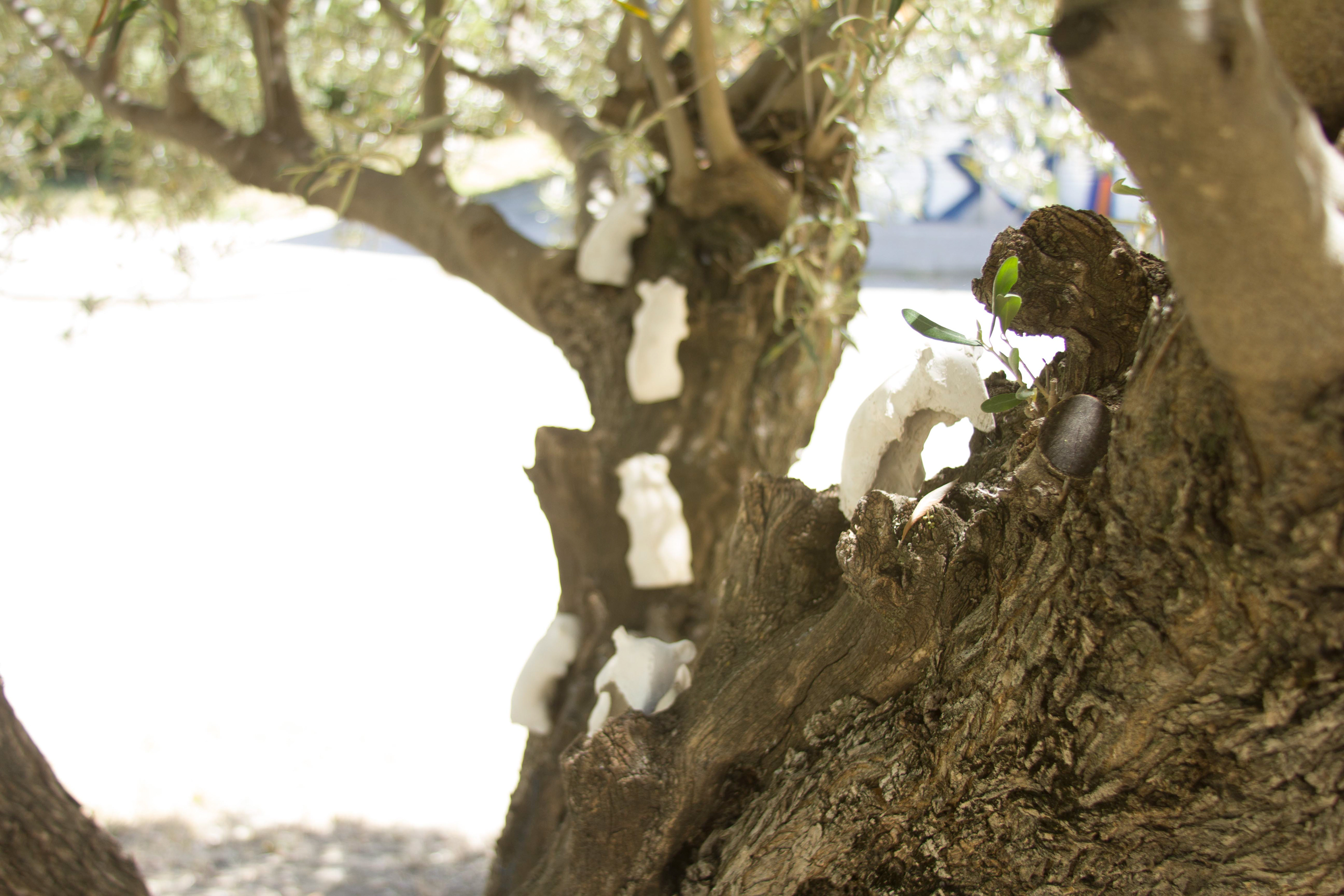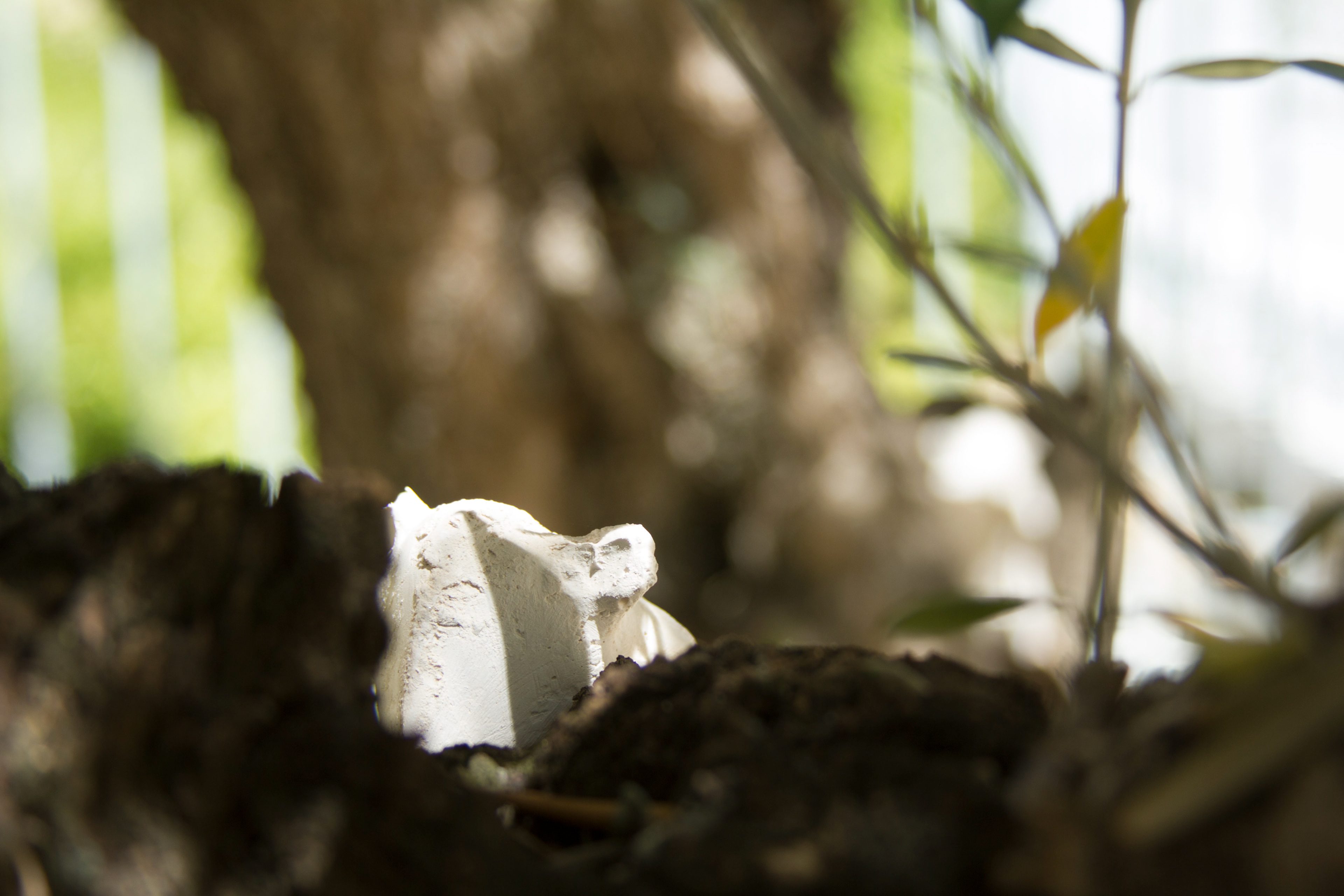“ El silencio se convierte en un ruido que se ha de aprender a escuchar, porque rúbrica la ausencia de los seres que en el momento actual han desaparecido y que previamente habían estado en contacto con estos u otros objetos. La proximidad contagia recíprocamente algo del sujeto al objeto y del objeto al sujeto, en cualquier circunstancia. Lo que queda depositado en el objeto es constitutivo de la memoria-empieza con un punto que se hace línea y después cosa- que representamos en palabras y articulamos en lenguaje.”
Chiharu Shiota, Las líneas de la mano.

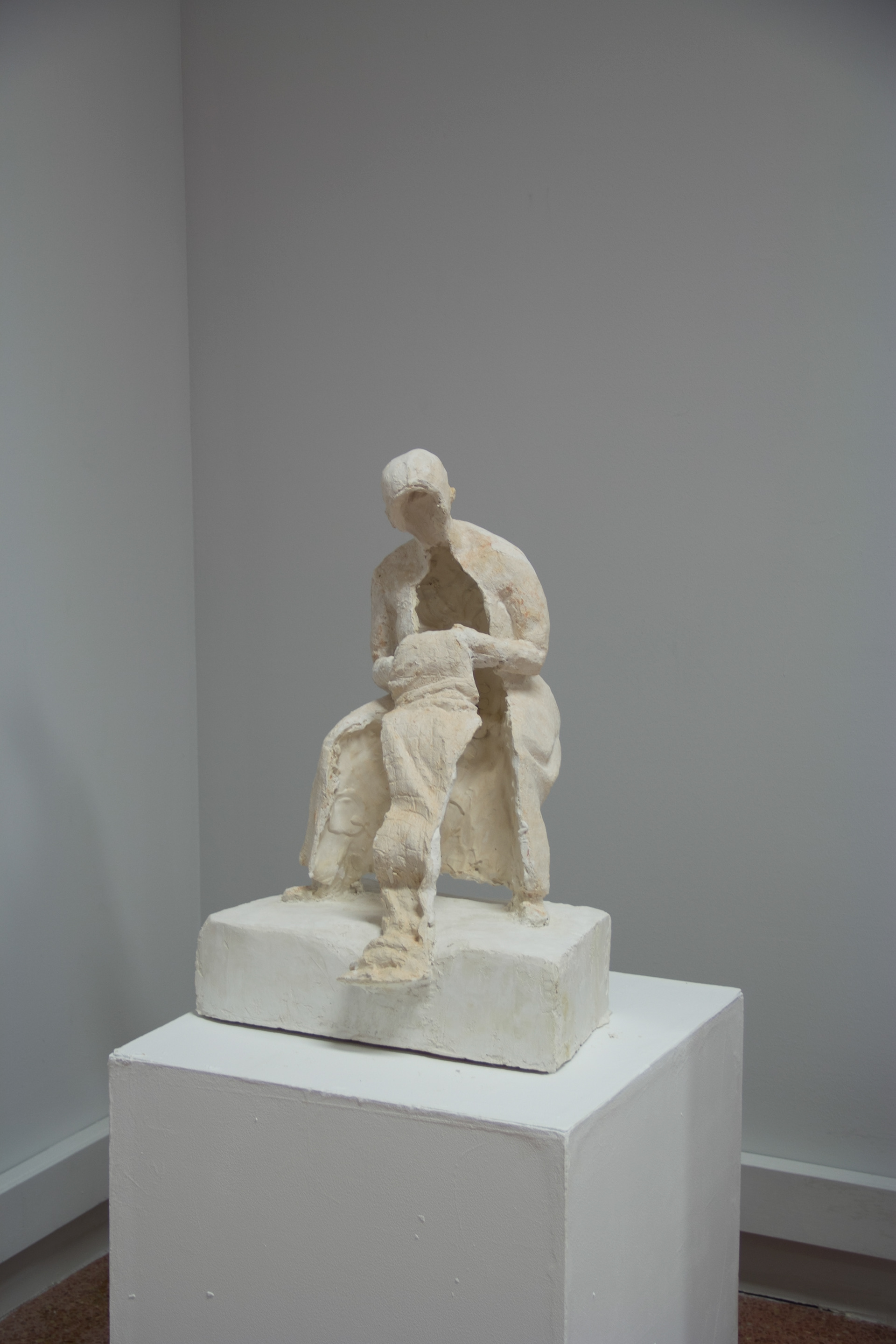
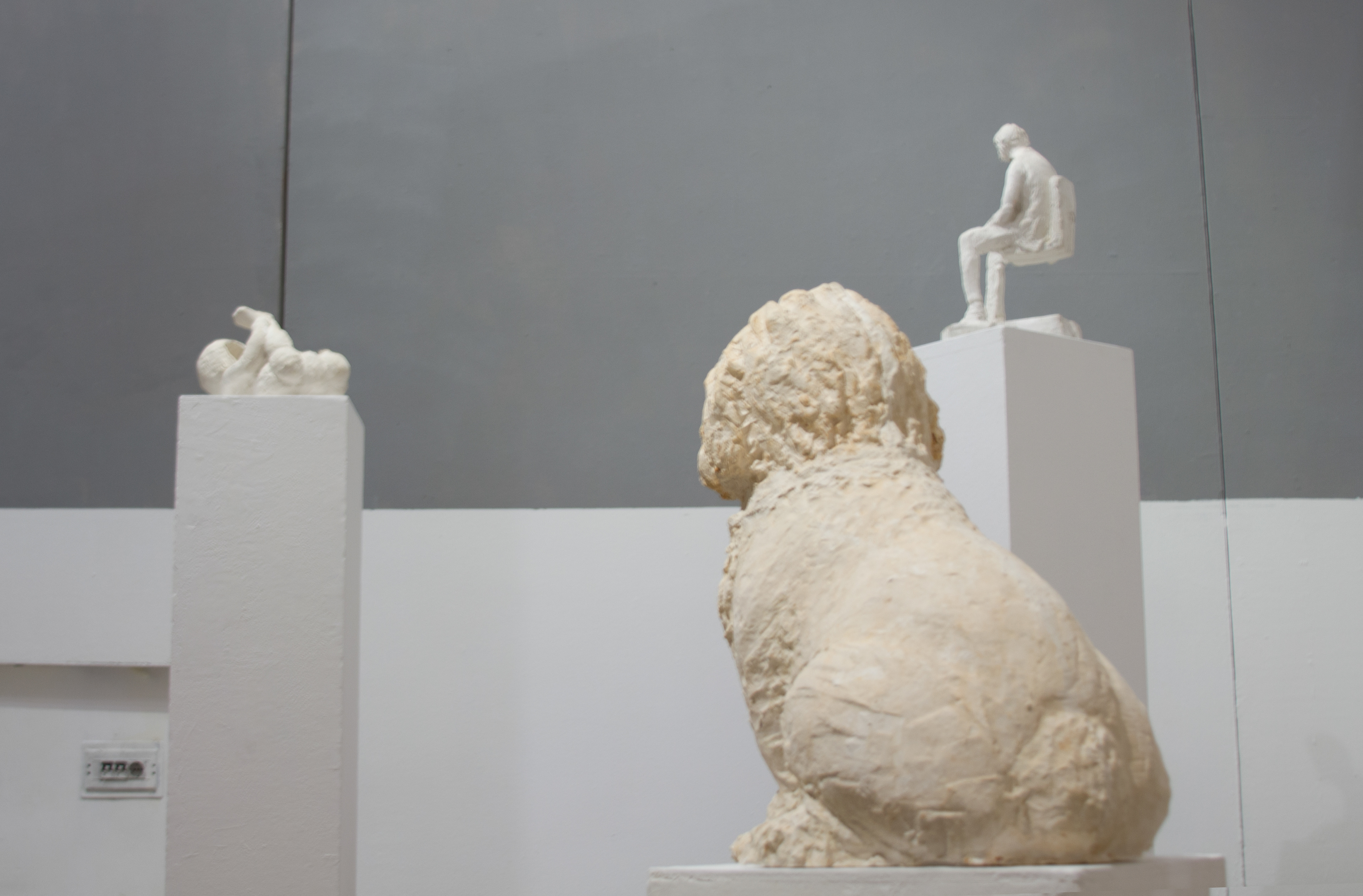


Desaparecer y vivir en los recuerdos de muchos otros: familiares, amigos, conocidos y no tan conocidos; nos traen a la vida con cierta periodicidad hasta el final de sus días, y así hasta que convertirnos en un vago recuerdo, hasta que dejar de existir es un hecho y no hay información datada del trayecto recorrido. No memorabilia.
“Encontrar una significación sobre su lugar en relación al objeto perdido. Esto podrá dar lugar al síntoma, a las formaciones del inconsciente, a las identificaciones (como efectos de significación), o al acto sostenido desde el fantasma. A veces, se soporta el vacío mismo y desde allí se crea.” María Elena Elmiger.
Este proyecto se construye a partir de los momentos más cercanos a la pérdida, en los que procesos mnémicos de ardua complejidad basados en diferentes tipos de lenguajes discursivos engañan al yo consciente. El subconsciente del individuo busca aferrarse a un pasado no muy lejano y niega el advenimiento de un futuro incierto. La capacidad de aceptación o de sobrellevar el duelo es diferente en cada ser humano por lo que las percepciones sensoriales suelen ser de distintos tipos, bajo un vago recuerdo o emulación de escenas que fueron, que pudieron haber sido y no son; recuerdos formulados para malversar sentimientos, engañar el dolor.
La memoria inmediata, tipo de memoria más centrada en el lapsus de recuerdo más cercano, más centrado en la capacidad de almacenar información a corto, cortísimo plazo.En este proyecto, refiere al instante en que los sentidos del ser humano se ven engañados, o que perciben el paso u estado formal del entorno que le rodea y llega a una conclusión válida.
Para justificar la Memoria Inmediata como reacción involuntaria del subconsciente y la percepción del individuo, su significado se basa en la unión de las imágenes sucesivas y las imágenes de representación. Es decir, se manifiesta como respuesta a uno o más estímulos sensoriales, de carácter involuntario, cuyas huellas mnémicas se ven afectadas por imágenes previamente ya originadas, es una memoria de carácter involuntario y tiempo limitado. Are you Still There? se centra en el diálogo establecido entre el entorno del fallecido y sus allegados o seres queridos, focalizado en los instantes de mayor cercanía a la pérdida, en donde la ausencia del ser querido se va marcando, más y más, por su inexistencia en el entorno, el Vacío.
La memoria es como un laberinto cuyos muros se encuentran en constante movimiento, con infinidad de salidas, y vertientes, he ahí el momento en el que el vacío empieza a formar parte del juego y se divierte con la percepción del ser humano. Un lenguaje que empieza a formarse entre el individuo, el entorno y el “hueco”. Es “el qué, el cómo y el dónde” cuándo el auto-reflejo de la psique con relación al entorno empieza a desarrollar un lenguaje, y se entabla una conversación.
Disappear and live in the memories of many others: relatives, friends, acquaintances and not so well-known; they bring us to live with a certain periodicity until the end of their days, and so on until we become a vague memory until they cease to exist as a fact and there is no dated information on the journey travelled. No memories.
“Finding a meaning about its place in relation to the lost object. This may give rise to the maximum, to the formations of the unconscious, to the identifications (as effects of signification), or to the sustained act from the phantasy. Sometimes, the same emptiness is endured and from there it is created.” Maria Elena Elmiger.
This project is built from the moments closest to the loss, in which arduously complex mnemic processes based on different types of discursive languages deceive the conscious self. The individual's subconscious seeks to cling to a not-too-distant past and denies the advent of an uncertain future. The ability to accept or cope with grief is different in each human being, so sensory perceptions are usually of different types, under a vague memory or emulation of scenes that were, may have been, and are not; Memories formulated to embezzle feelings, deceive pain.
Immediate memory is a type of memory more focused on the closest memory lapse, more focused on the ability to store information in the short, very short term. In this project, it refers to the instant in which the human being's senses are deceived, or who perceives the step or formal state of the surrounding environment and reaches a valid conclusion.
To justify Immediate Memory as an involuntary reaction of the subconscious and the individual's perception, its meaning is based on the union of successive images and representation images. That is, it manifests itself as a response to one or more sensory stimuli, of an involuntary nature, whose memory traces are affected by previously originated images, it is a memory of an involuntary nature and limited time. Are you still there? focuses on the dialogue established between the environment of the deceased and their relatives or loved ones, focused on the moments of closest proximity to the loss, where the absence of the loved one is marked, more and more, by their non-existence in the environment, the vacuum.
Memory is like a labyrinth whose walls are in constant movement, with an infinite number of exits and slopes, that is the moment in which the void begins to form part of the game and has fun with the perception of the human being. A language that begins to form between the individual, the environment and the “hole”. It is “the what, the how and the where” when the self-reflection of the psyche in relation to the environment begins to develop a language, and a conversation begins
Among the Others
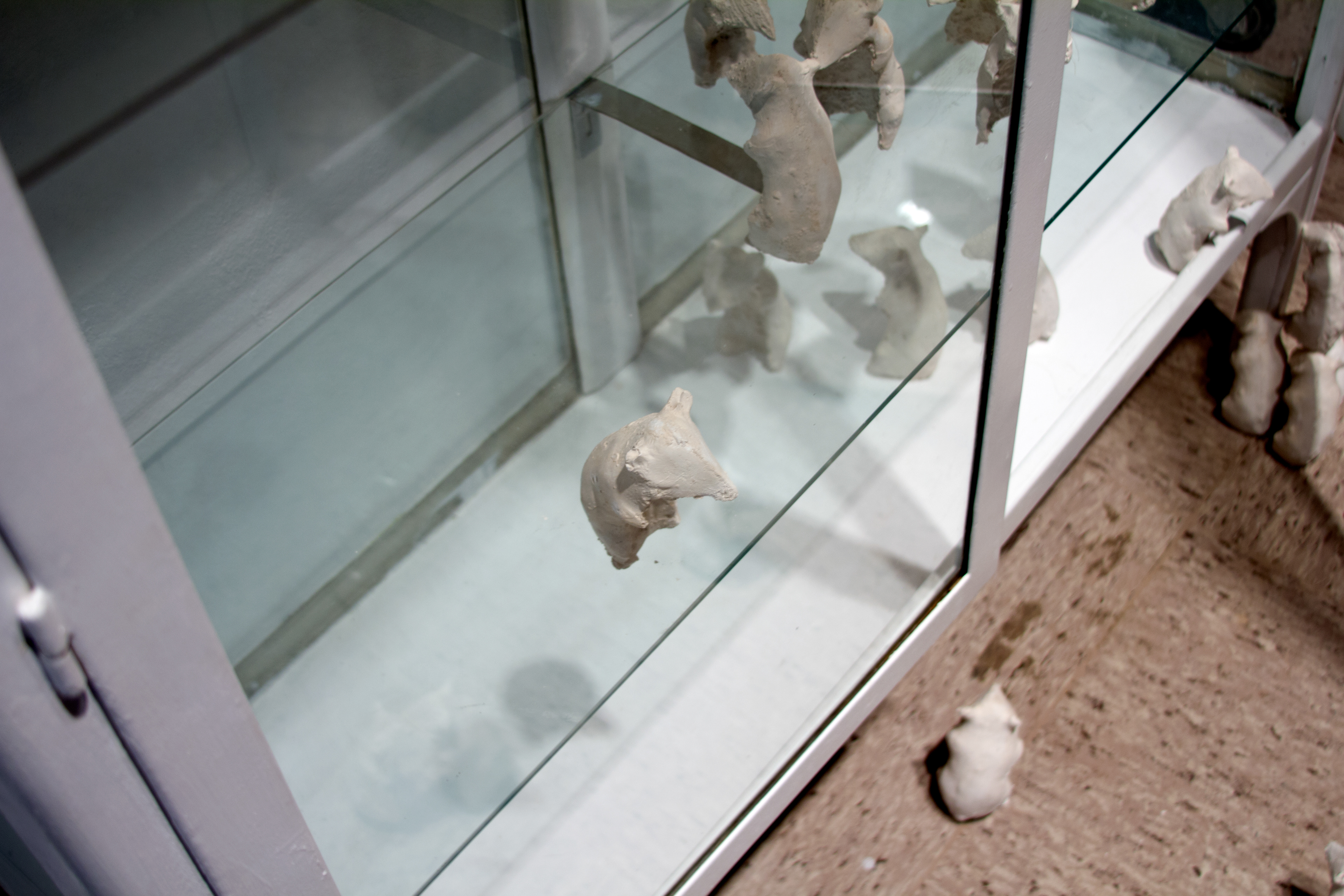
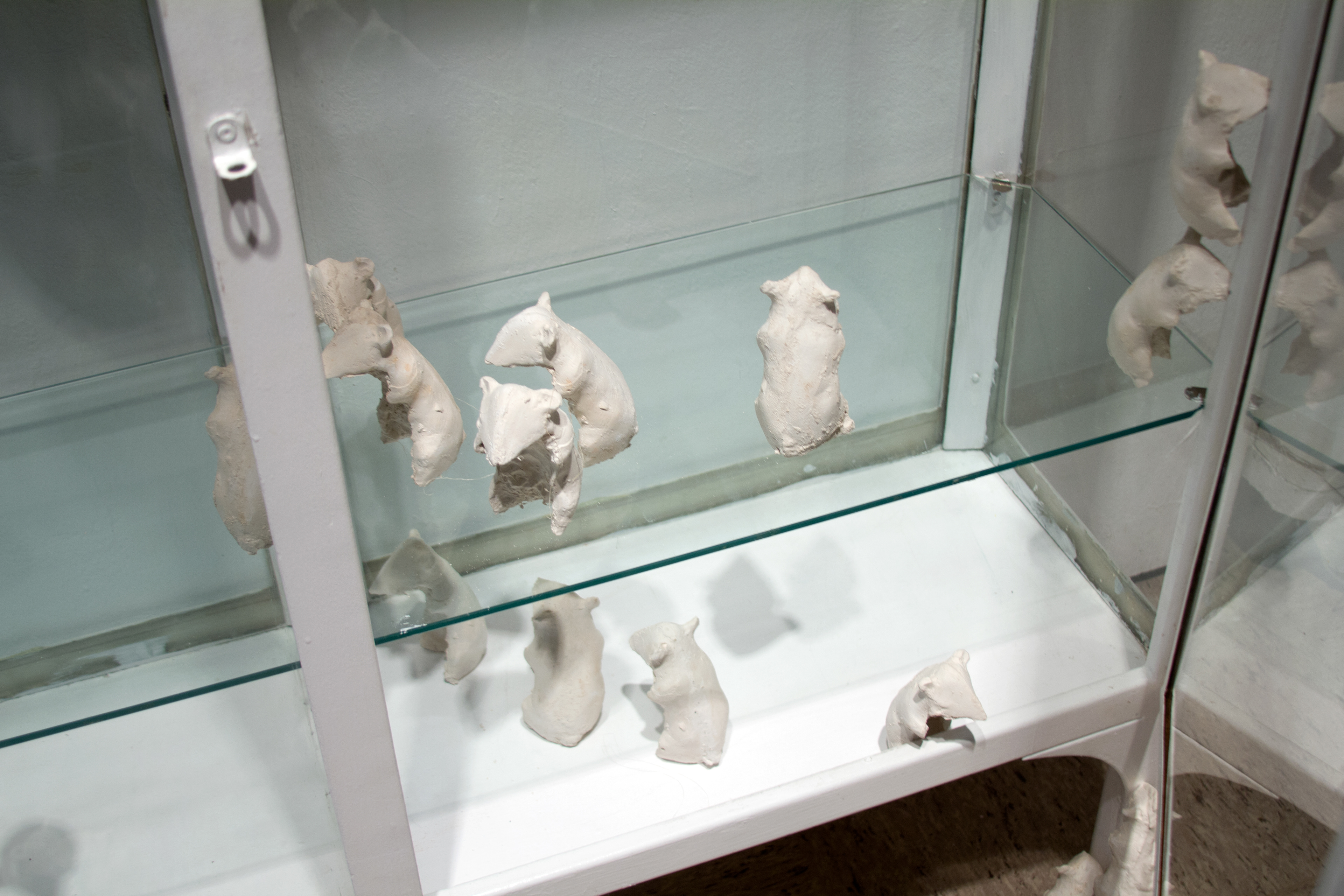
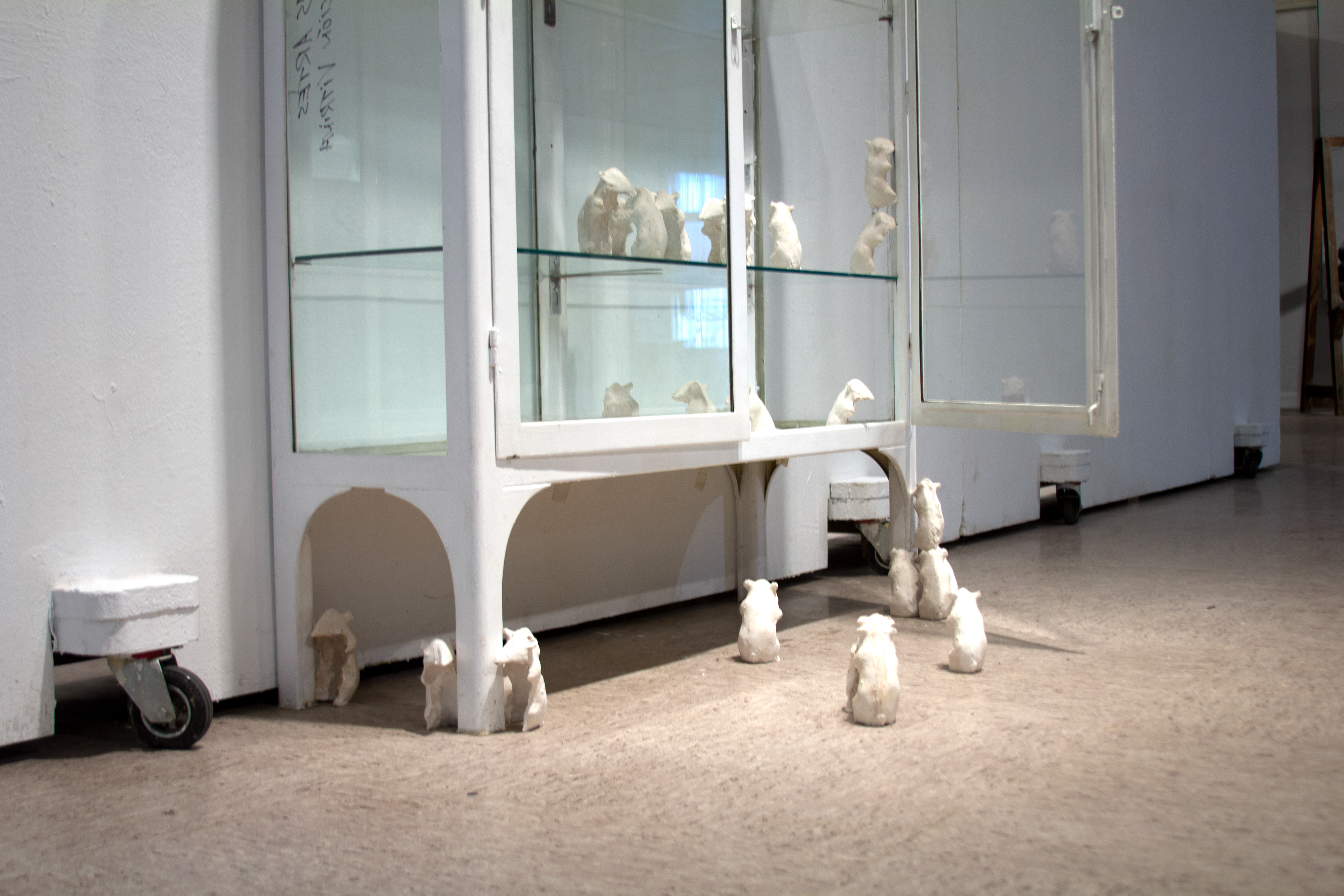

Serie Escultórica compuesta por cincuenta piezas. Los materiales utilizados están compuestos de Exaduro, arena de río y resina. El desarrollo de la instalación de la serie se ha desarrollado en diferentes emplazamientos, tanto en exteriores como en interiores.
La serie se centra en la situación en la que se encuentra la individualidad y la expresión del yo en un entorno que nos empuja a ser iguales o a seguir un patrón. Así mismo frente a su homogeneidad, todas y cada una de las piezas son diferentes en sus características físicas.
Sculpture Series is composed of fifty pieces. The materials used are composed of Exaduro, river sand and resin. The development of the installation of the series has been carried out in different locations, both outdoors and indoors.
The series focuses on the situation in which individuality and the expression of the self find themselves in an environment that pushes us to be the same or to follow a pattern. Likewise, compared to its homogeneity, each and every one of the pieces is different in its physical characteristics.
